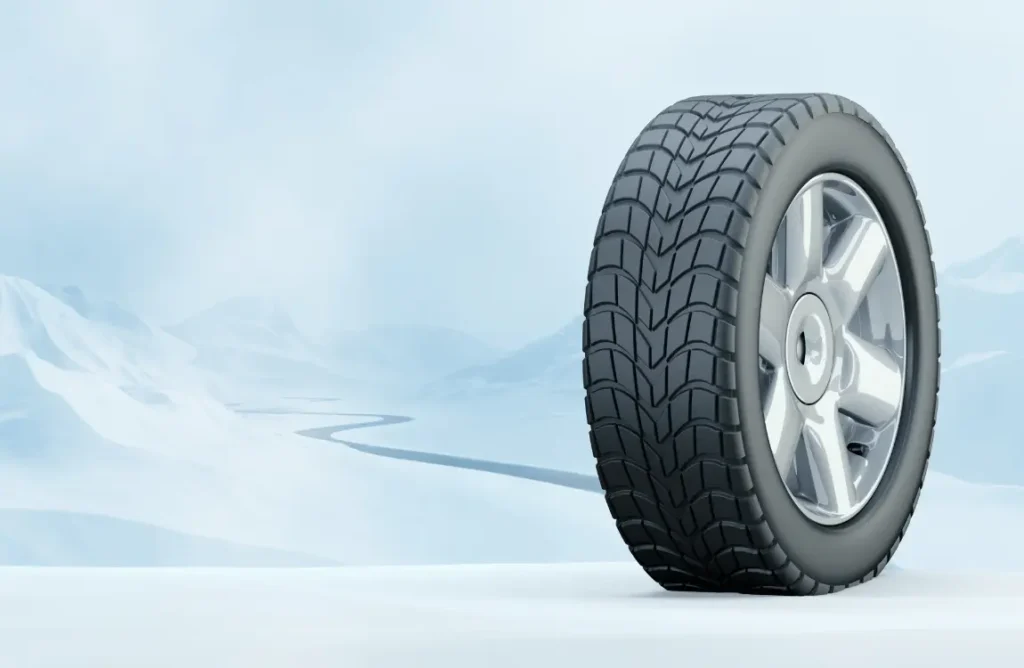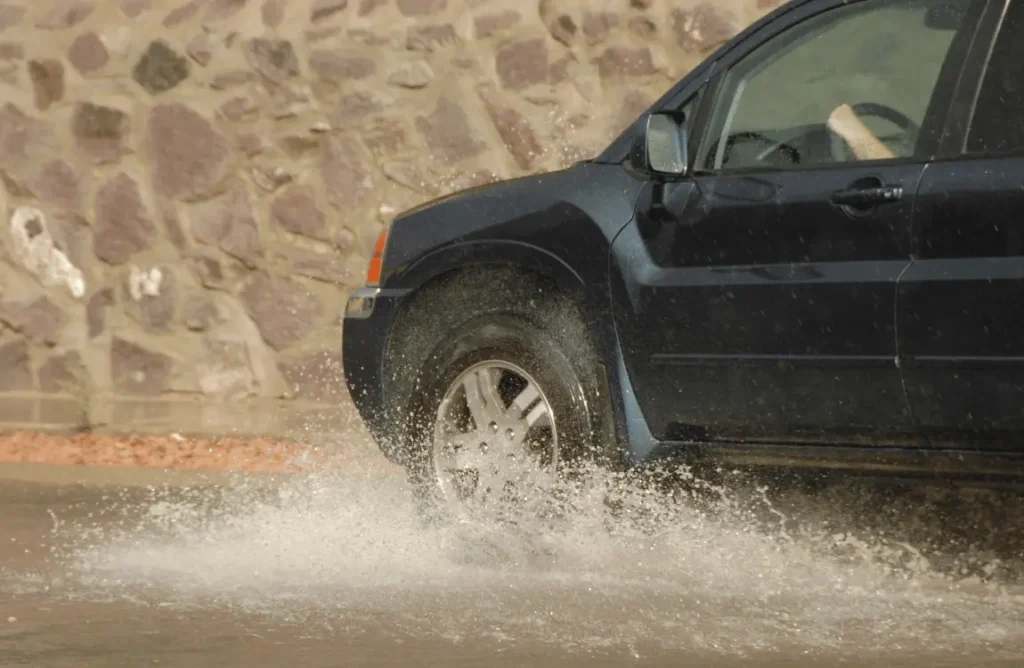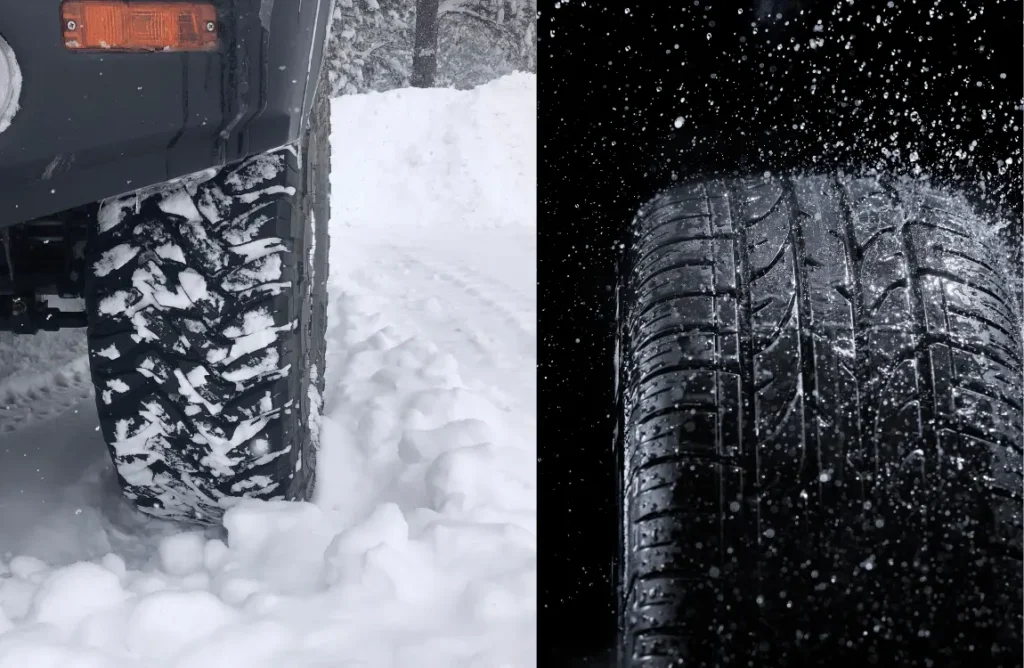The Michelin CrossClimate2 and Bridgestone Blizzak WS90 are among the best tires for rain and snow. These tires offer exceptional grip and handling in wet and snowy conditions.
Tackling adverse weather demands reliable tires capable of ensuring safety and performance. Drivers face unique challenges when rain and snow hit the roads; choosing the right tire becomes paramount. The top contenders like the Michelin CrossClimate2 stand out with their innovative tread patterns and compound technologies, tailored for versatile weather conditions.
Bridgestone’s Blizzak WS90, on the other hand, brings in years of trust and performance in winter weather driving. Selecting tires designed for both rain and snow can mean the difference between a secure journey and a precarious one. With a set of these tires, drivers can navigate confidently through the unpredictability of seasonal transitions.
Essential Traits For All-season Tires
Finding the best tires for rain and snow involves understanding the essential traits of all-season tires. All-season tires should perform well under various conditions. Ideal tires combine safety and durability to handle wet and icy roads. Let us explore what makes some tires stand out in rain and snow.
Tread Patterns That Battle The Elements
The tread pattern on your tires is vital for safe driving in bad weather. Look for tires with deep grooves and high sipe density. These features expel water and snow efficiently, reducing hydroplaning risks. Consider the Michelin CrossClimate2 and Goodyear Assurance WeatherReady for their exceptional patterns.
- Deep grooves help channel water away from the tire.
- Lateral sipes provide biting edges for better grip on snow.
- Variable patterns reduce noise and improve comfort.
Compound Matters: Rubber That Stays Soft
The compound of the tire directly influences performance in varying temperatures. A flexible rubber compound remains effective under cold conditions. This flexibility ensures better traction on icy roads. Tires like the Bridgestone Blizzak WS90 and the Continental VikingContact 7 use advanced compounds to stay soft in winter conditions.
| Tire Model | Compound Features |
|---|---|
| Bridgestone Blizzak WS90 | Multi-cell compound with bite particles for ice traction. |
| Continental VikingContact 7 | The flexible rubber compound remains soft at low temperatures. |
Select tires with these essential traits to ensure a safer, more reliable drive in any weather. Remember to check your tire pressure regularly. Proper inflation maintains tire integrity and performance in harsh conditions.

Hydroplaning Resistance
Hydroplaning resistance is a critical factor when selecting the best tires for rain and snow. As tires whisk across wet surfaces, the risk of hydroplaning—where a layer of water builds between the wheels and the road, leading to loss of traction—increases. Premium tires designed to combat this peril feature advanced siping and water channeling technologies. These innovations work together to effectively displace water and maintain tire contact with the road, ensuring a safer driving experience in challenging weather conditions.
Siping And Water Channeling Technology
The design of a tire’s tread plays a vital role in preventing hydroplaning. Siping involves adding numerous small cuts across the tire’s surface. This improves traction by providing additional “biting” edges against the road.
- Expels water quickly to reduce the risk of hydroplaning.
- Enhances grip on wet and icy surfaces.
- Improves traction without compromising tire stability.
Water channeling technology refers to the grooves and channels on the tire’s tread. These deep pathways are engineered to:
- Route water away from the footprint.
- Facilitate better road contact.
| Siping | Water Channeling |
|---|---|
| Small cuts on the tread | Grooves and channels |
| Promotes edge grip | Drives water away from the tire |
Maintaining Control In Heavy Rain
When the downpour turns heavy, control is everything. Tires with superior hydroplaning resistance give drivers peace of mind. They allow for:
- Steady handling in adverse conditions.
- Better cornering and braking capacity.
- Reduced stopping distances on wet surfaces.
Key features to look for include:
- Broad shoulder blocks.
- Reinforced rubber compounds.
- Optimal tread patterns for water evacuation.
Integrating these features, tires keep the vehicle stable and responsive, even when Mother Nature challenges your journey.
Winter Traction Fundamentals
Choosing the right tires for winter can be the difference between a
slippery situation and a secure ride. Winter roads are tricky. Snow and ice need special
attention. This guide covers two essentials: deep treads for snowy roads and
the studdable versus studless tire debate.
Deep Treads For Snowy Roads
Snow-covered roads require tires with deep treads. Deep treads act like a
snowplow for your vehicle. They cut through the snow and eject it from the tire.
This keeps the tire in contact with the road.
- Channels away water: Prevents hydroplaning by moving water out.
- Bites into the snow: Deep grooves grip the road better.
- Enhances braking: Reduces stopping distances on snow.
Studdable Vs. Studless Options
Studded tires feature metal studs. Studless tires rely on rubber compounds
and tread design. Studded tires offer excellent grip on ice. Studless tires provide
good performance in various winter conditions.
| Studdable Tires | Studless Tires |
|---|---|
| Exceptional ice traction | Quieter ride |
| Increased road wear | Improved tread technology |
| Useful in extreme winter zones | Flexible in various cold conditions |
Top Performers In Wet And Snowy Conditions
Top Performers in Wet and Snowy Conditions mean safety and reliability when driving through the toughest weather. Drivers need to trust their tires. The right choice can lead to better handling and reduced braking distances. With numerous options available, it can be a challenge to choose the best tires suited for rain and snow. Let’s dive into the top-performing tires that ensure maximum grip and safety, no matter how wet or icy the roads become.
Leading Brands For Wet-weather Grip
When the skies pour down, you need a tire that cuts through water like a knife. The following brands have mastered wet-weather technology, offering superior grip and stability:
- Michelin: Their CrossClimate series shines in the rain, thanks to innovative tread patterns.
- Goodyear: The Assurance WeatherReady tires employ sweeping tread grooves to evacuate water swiftly.
- Bridgestone: Turanza tires stand out with their hydroplaning resistance, offering a secure and nimble ride.
- Continental: TrueContact tires are known for their exceptional rain performance, providing peace of mind on slick roads.
Premium Choices For Snow And Ice
In the heart of winter, the right tire makes all the difference. Tread carefully with these top choices for snow and ice:
- Nokian: Hakkapeliitta series, a leader in the winter tire category, offers unparalleled traction on ice.
- Yokohama: The iceGUARD lineup has a reputation for conquering snowy roads with confidence.
- Pirelli: Their Winter Sottozero series is synonymous with high performance in the most chilling conditions.
- Falken: WildPeak A/T Trail is the all-terrain option for those who need all-year performance, especially in the snow.
Care And Maintenance For All-weather Tires
Keeping all-weather tires in top shape is crucial for safe driving through rain and snow. Proper care helps maintain grip, reduce wear, and extend tire life. Focus on consistent maintenance to experience the best performance from your tires.
Proper Inflation For Seasonal Changes
Temperature shifts affect tire pressure. Check pressure monthly using a reliable gauge. Maintain manufacturer-recommended levels to ensure safety and efficiency. Incorrect inflation leads to uneven wear, poor handling, and possible tire damage.
- Increase pressure in cold weather.
- Decrease pressure in warm weather.
Routine Inspections For Lasting Performance
A regular tire check detects issues early. Look for cuts, bulges, and worn treads. Rotate tires every 6,000 to 8,000 miles for even wear distribution. This simple practice prolongs tire life and maintains optimal traction.
| Inspection Area | What to Look For | Action to Take |
|---|---|---|
| Tread Depth | Uneven or low tread | Consider replacement |
| Sidewalls | Cuts or bulges | Professional inspection |
| Pressure | Low or high readings | Adjust to the correct level |

Making The Right Choice
Making the Right Choice in tires means not just keeping your car on the road. It’s about ensuring safety and reliability in rough weather. Whether it’s a downpour or snowstorm, the correct tires make a world of difference. This guide will help you match your tires to your driving habits and decide when to upgrade to specialized snow tires.
Matching Tires To Your Driving Habits
Finding the perfect tires starts with how you drive. Think about these points:
- City or highway: More highway miles need better water channeling.
- Speed: Sporty driving calls for responsive tires.
- Climate: Frequent rain and snow demand all-season or winter tires.
Let’s dive into each aspect.
| Driving Condition | Tire Type |
|---|---|
| Wet Roads | All-Season with good water evacuation |
| Snowy Terrain | Winter tires for grip on ice and snow |
| Urban Driving | Low-noise, comfortable ride tires |
When To Consider Specialized Snow Tires
Winter weather challenges the best all-season tires. Specialized snow tires provide extra security:
- Better traction in snow and ice.
- Special rubber stays soft in the cold for grip.
- Deeper tread depth cuts through the snow.
Consider making the switch if:
- Your area has long winters.
- Roads are frequently snowy or icy.
- You feel unsure about your current tires.
Snow tires can mean the difference between a steady drive and a slip. Pay attention to local weather patterns. Do this to decide on the best time for a tire change.
Frequently Asked Questions
What Are The Top Tires For Wet Conditions?
Certain tires excel in wet conditions, offering superior grip and handling. Michelin Pilot Sport A/S 3+, Continental ExtremeContact DWS06, and Bridgestone Potenza RE980AS are notable for their performance in rain and light snow.
How Do Tires For Snow Differ From Rain Tires?
Snow tires feature deeper treads and biting edges for traction. They maintain flexibility in severe colds. Rain tires, on the other hand, prioritize water evacuation to prevent hydroplaning and often have a different tread pattern for optimal performance on wet roads.
Can All-season Tires Handle Snow And Rain Effectively?
All-season tires are versatile, designed for a range of conditions including light snow and rain. However, they may not perform as well as specialized winter tires in heavy snow or dedicated rain tires in torrential conditions.
What Features Make Tires Safe For Snowy Roads?
Tires safe for snowy roads have deep treads, siping for better grip, and are made from a rubber compound that stays flexible in cold temperatures. Look for tires with the Three-Peak Mountain Snowflake symbol, indicating they meet snow traction performance requirements.
Conclusion
Selecting the right tires for wet and snowy conditions is crucial for your safety and vehicle performance. Durability, tread depth, and grip are key when battling the elements. Remember, investing in top-rated rain and snow tires can mean the difference between a secure journey and a treacherous one.
Drive confidently and arrive safely with the best tires under your vehicle.





















